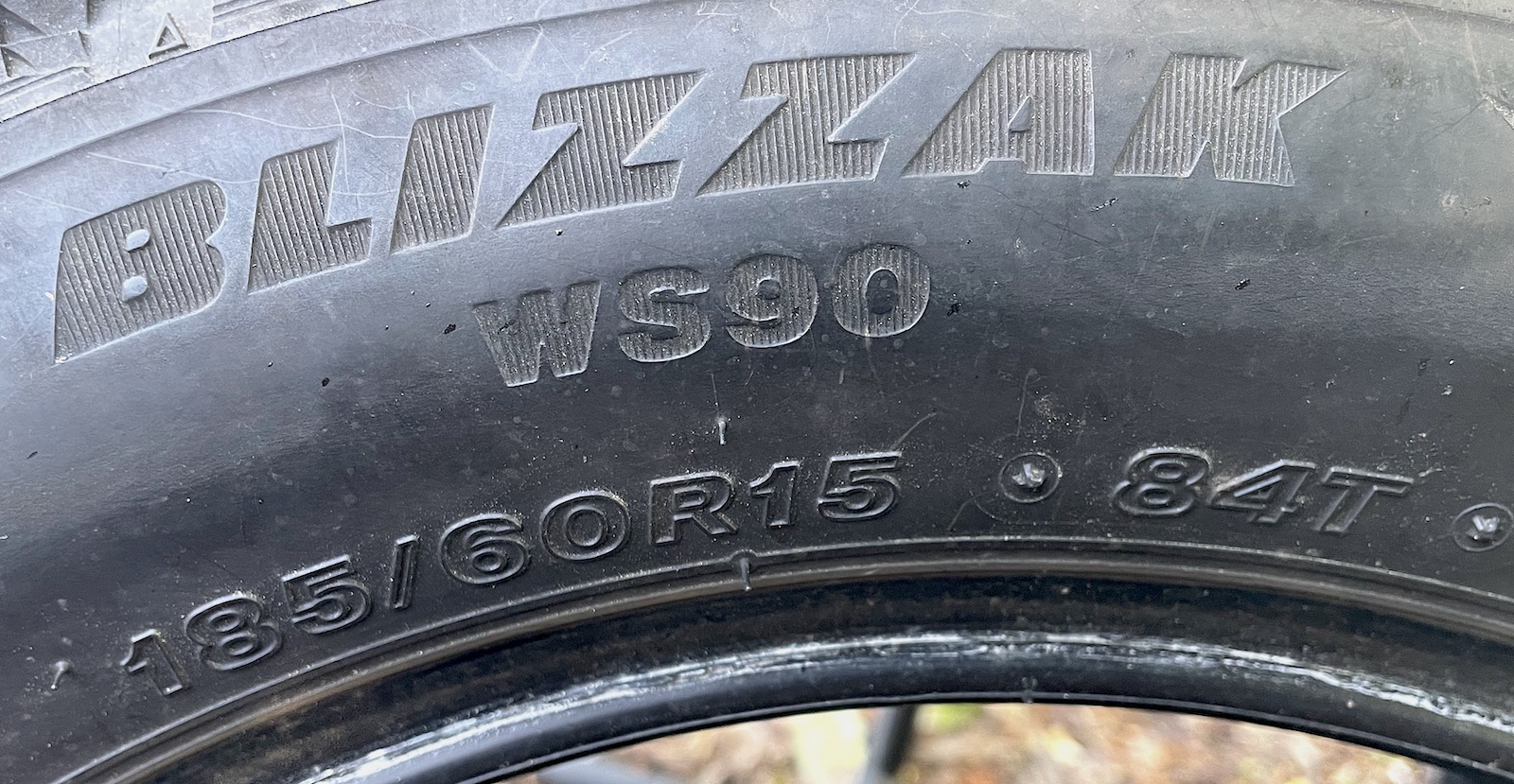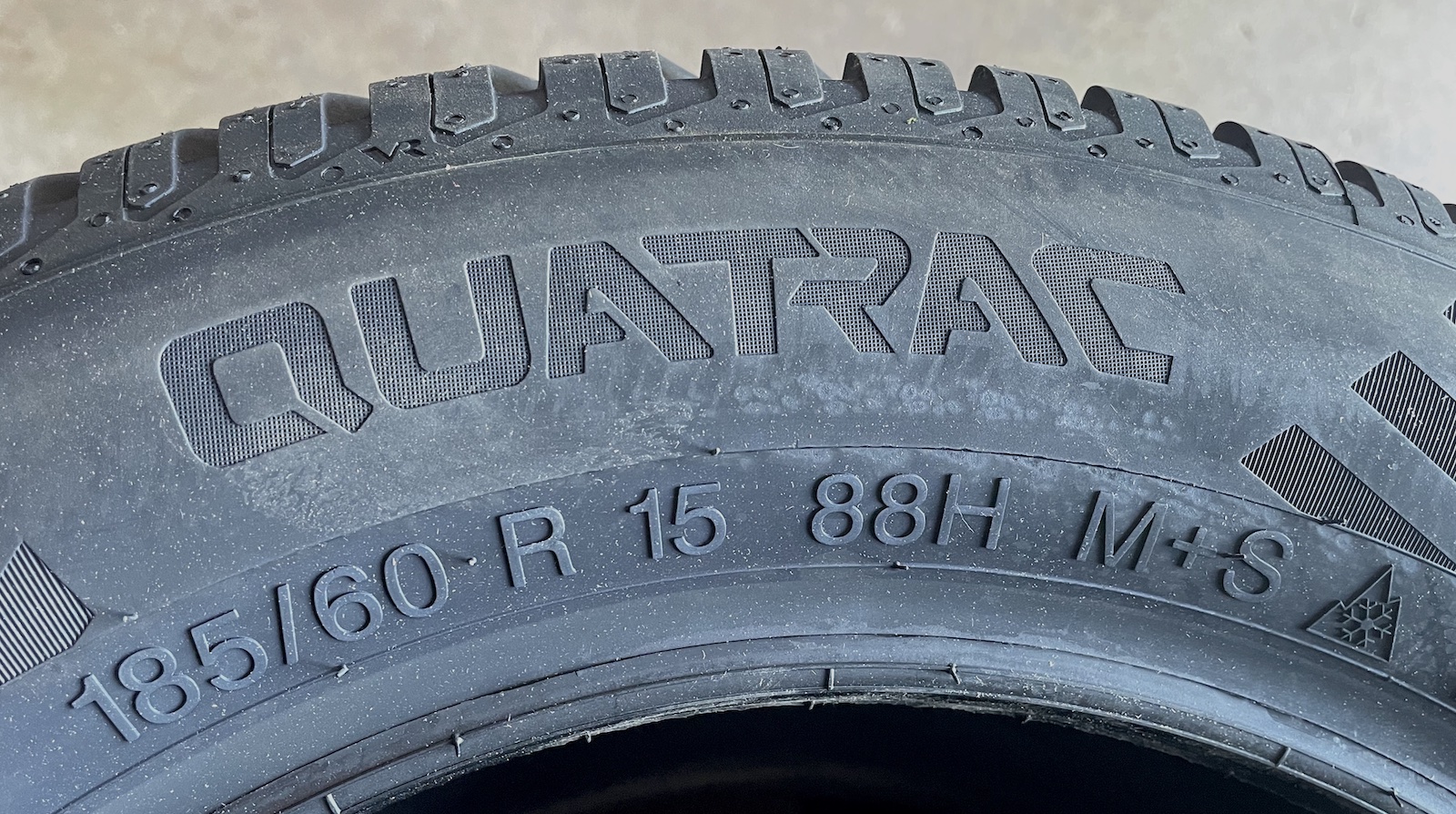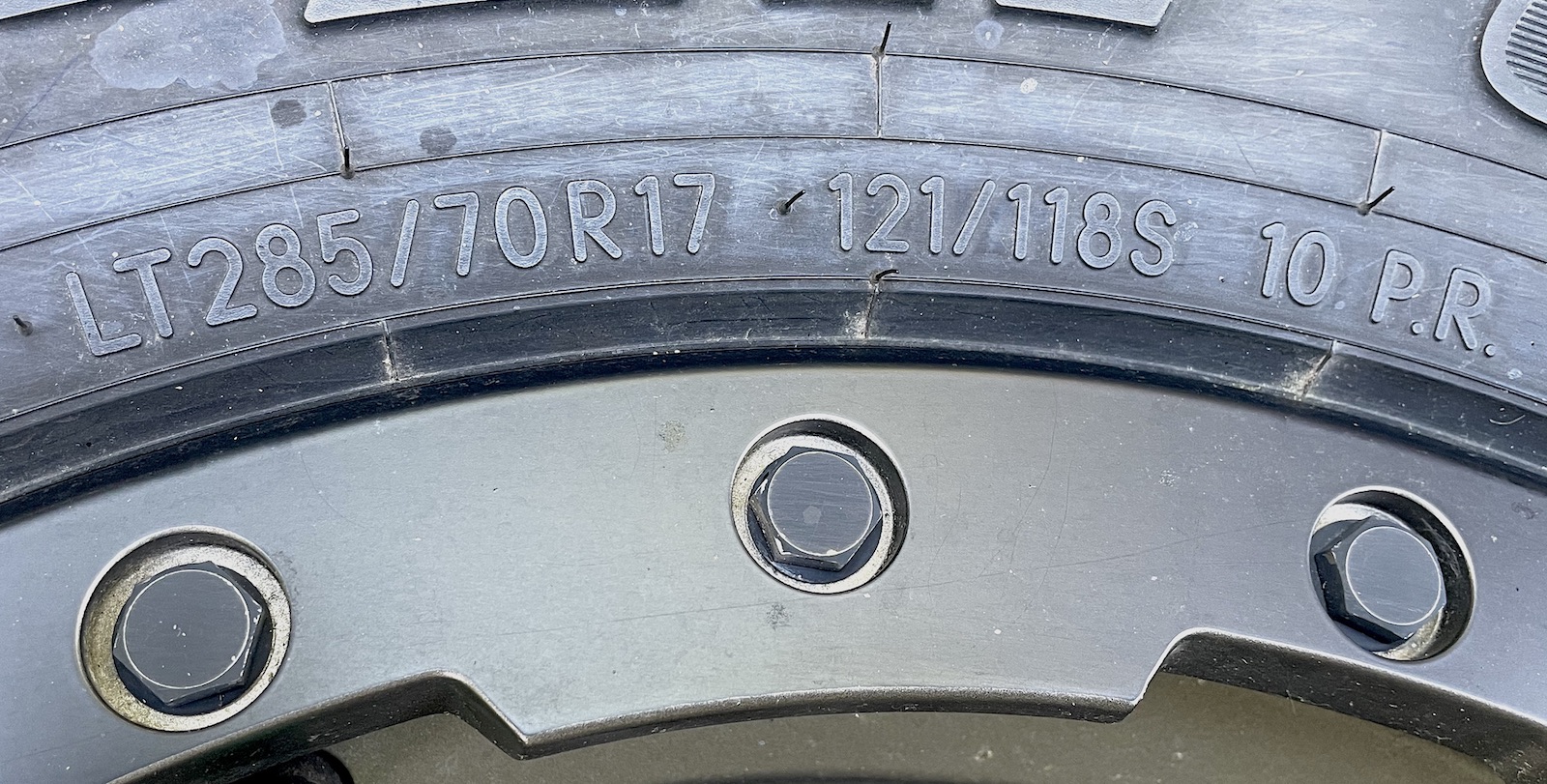Contents
A tire’s sidewall is stamped with numbers and letters that provide helpful information, including the tire’s load index.
The load index is a number assigned to the tire designating its maximum load-carrying capacity.
Here’s the basic rule:
The higher the load index number, the greater the capacity.
Above all, know that you should always meet or exceed the tire load index standards required by your vehicle’s manufacturer. Choosing tires with a lower load index rating can be critically dangerous.
Of course, for the tire to achieve the highest capacity, it must be inflated to the max load-sustaining pressure.

185/60R15 Bridgestone Blizzak WS90 winter tire
Let’s look at this tire’s sidewall. The 84 near the end signifies the load index. When the tire is inflated correctly, this number translates to a maximum capacity of 1102 pounds.
Most passenger vehicles have a load index between 70 and 126.
Shop now for tiresRead this: How To Read the Side of Your Tire
Why Does Tire Load Index Matter?
Knowing the tire load index is essential to remaining safe on the road. By choosing tires with the right index, you avoid blowouts, prevent structural damage to your vehicle, and keep the tires from wearing prematurely.

185/60R15 Vredestein Quatrak all-season tire
The load index is even more critical if you plan to haul heavy items or tow. You should always stay within the specified weight for the tires and the vehicle.
When shopping for a set of new tires, make sure you match or exceed the specs that were factory installed. You’ll know what’s needed to protect your ride by referring to the original equipment.
As you figure out the weight your tires need to carry, remember to factor in the weight of the vehicle, the loads you typically haul, and the passengers.
Once the new tires are installed, take care of them. Inflate the tire pressure to the appropriate specs and check it often.
Load Range Is About Air Pressure and Durability
The tire load index is similar to the tire’s load range, but it adds detailed info to the rating. The tire load range is an older standard that now mostly applies to truck tires.
Both classifications can be stamped on tires.
- The load index indicates its load-carrying capacity at a designated pressure.
- However, the load range indicates how much air pressure the tire can hold while also showing its durability.
All tires are made from cord and rubber layers, known as plies. Yet, different types have a varying number of layers. Traditionally, more plies meant that the tire could handle more pressure and weight.
More plies aren’t necessary with modern tires because advanced materials are durable. Therefore, the load range doesn’t solely indicate how many plies a tire has. Instead, the rating is meant to show toughness. For example, C range tires are equivalent in strength to a six-ply construction. However, that doesn’t mean that the tire physically has six plies. It might contain only two but is as durable as six traditional plies.
Shop now for tiresMost cars, crossovers, and minivans don’t have a load range listed on the tire. When the tire is unmarked, assume it has a standard four-ply rating. Again, when replacing tires always meet or exceed the original equipment load index and load range standards.
Best Tire Load Index for Towing
If you plan to tow, you must choose your tires carefully. There’s more to think about beyond the load index.
Here are some specifications to consider.
- Load index: 119 or higher
- Load range: E or higher
- Speed range: R for heavy-duty trucks (106 mph)
It’s always best to follow the advice in your owner’s manual to determine what’s recommended for your truck.
How to Read a Tire Sidewall
Using our tire example from above, let’s look at what all the numbers and letters on the sidewall mean.
Tire size: The first factor is the size of the tire. The “P” at the beginning stands for passenger car tire. You may also see “T” for a temporary spare or “LT” for a light truck. Following that is the size breakdown.
- Tire width: In our example, the tire width is 205 millimeters.
- Aspect ratio/profile: The two-digit number (65 in our example) is the aspect ratio, illustrating that the tire’s height is 65% of its width.
- Construction: “R” identifies the tires as radial, which is the most common.
- Rim diameter: The final two-digit number is the rim diameter in inches, so 15 inches in this case.
Load index: The load index is often listed with the speed rating. Therefore, there will be a number and a letter. For this tire, the load index is 94, indicating the capacity to hold 1,477 pounds.
Speed index: Directly following the load index is the speed index. These do not go in order, as some letters have unique designations. For example, “H” represents a maximum speed of up to 130 mph.
Manufacturing information: The manufacturing specs of the tire will be listed toward the bottom of the sidewall. Here’s what our tire looks like.
- DOT: Stands for the Department of Transportation
- 12: Signifies the manufacturer that made the tire
- 34: Shows the plant where the manufacturer produced the tire
- 5678: Represents the specific tread characteristics
- 5212: Date code, with the 52 indicating what week of the year it was produced and the 12 corresponding to the year
If you practice reading a few sidewalls, you will get the hang of it.
Tire Load Index Chart
| Load Index |
Load-Carrying Capacity (lbs) |
Load Index |
Load-Carrying Capacity (lbs) |
| 71 | 761 | 89 | 1279 |
| 72 | 783 | 90 | 1323 |
| 73 | 805 | 91 | 1356 |
| 74 | 827 | 92 | 1389 |
| 75 | 852 | 93 | 1433 |
| 76 | 882 | 94 | 1477 |
| 77 | 908 | 95 | 1521 |
| 78 | 937 | 96 | 1565 |
| 79 | 963 | 97 | 1609 |
| 80 | 992 | 98 | 1653 |
| 81 | 1019 | 99 | 1709 |
| 82 | 1047 | 100 | 1764 |
| 83 | 1074 | 101 | 1819 |
| 84 | 1102 | 102 | 1874 |
| 85 | 1135 | 103 | 1929 |
| 86 | 1168 | 104 | 1984 |
| 87 | 1201 | 105 | 2039 |
| 88 | 1235 |
Shop now for tires






